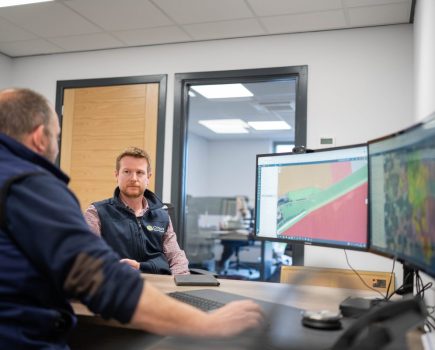With the government’s Farming Equipment and Technology Fund (FETF) re-opening soon, how could direct-to-device technology benefit machine maintenance?
While the many benefits of new technologies are well understood, there’s a catch – shiny new tools must be looked after, points out satellite expert, Eric Verheylewegen of Viasat Enterprise.
“This involves time and in some cases, growers will require new skills or more specialist tools to get things back up and running. Breakdowns are costly, repairs expensive, and downtime can have a significant knock-on impact on production,” he continues.
Internet of Things (IoT) enabled monitoring powered by continuous satellite-enabled connectivity can help farmers to sustain the condition and operational ability of their machines via predictive maintenance, helping to detect issues early and so prevent costly repairs.
“But farms are by definition situated in remote areas, often with limited or unreliable cellular connectivity which can prevent farmers from unlocking these valuable insights,” says Eric.
However, direct-to-device (D2D) is a new technology which aims to reduce the barrier to satellite connectivity while enabling farming equipment to seamlessly switch between a combination of cellular and satellite networks.
This could be a game-changer for farmers eager to stay hyper-aware of the condition of their machinery, suggests Eric. “Enabling near-constant oversight, D2D can help to improve the longevity of agri-tech investments, driving productivity rather than disrupting it.”
He highlights that currently, the agricultural sector faces a variety of challenges with unreliable cellular connectivity remaining a key problem for farmers eager to adopt new technologies. In fact, a recent NFU survey indicated almost half of participants deem their current broadband to be insufficient for their business.
“Despite these connectivity limitations, we’ve found the appetite for IoT adoption within the agricultural sector remains strong. In fact, data suggests the industry has increased its IoT budgets by 16% since 2021, demonstrating a clear eagerness to invest in this technology.
“This is explained by return on investment. Farmers can reduce nearly a third of their repair costs by using predictive maintenance methods. But how can we tackle this connectivity conundrum?” questions Eric.
He believes D2D connectivity could help bridge the gap between cellular and satellite networks to provide continuous and reliable connectivity. “It could even act as a backfill when cellular connectivity is patchy or fails, for example, during extreme weather.”
With this reliable connection, farmers could harness the full potential of predictive maintenance, receiving real-time alerts about their machinery from satellite-connected sensors. Eric says this allows for the early detection of issues such as decreased tyre pressure, poor engine function, or leaks or blockages in irrigation systems.
“As technology in farming continues to show every sign of acceleration, reliable satellite connectivity through D2D technology may be a key tool to help manage the other – giving farmers the ability to successfully maintain a growing arsenal.
“Whereas proactive maintenance can also help farmers to reap the full rewards of increased investment. By embracing this, they can keep machines operating efficiently, optimising output and avoiding unexpected costs for overall improved resilience of their agricultural operations,” concludes Eric.
This article was taken from the latest issue of CPM. For more articles like this, subscribe here.
Sign up for Crop Production Magazine’s FREE e-newsletter here.




